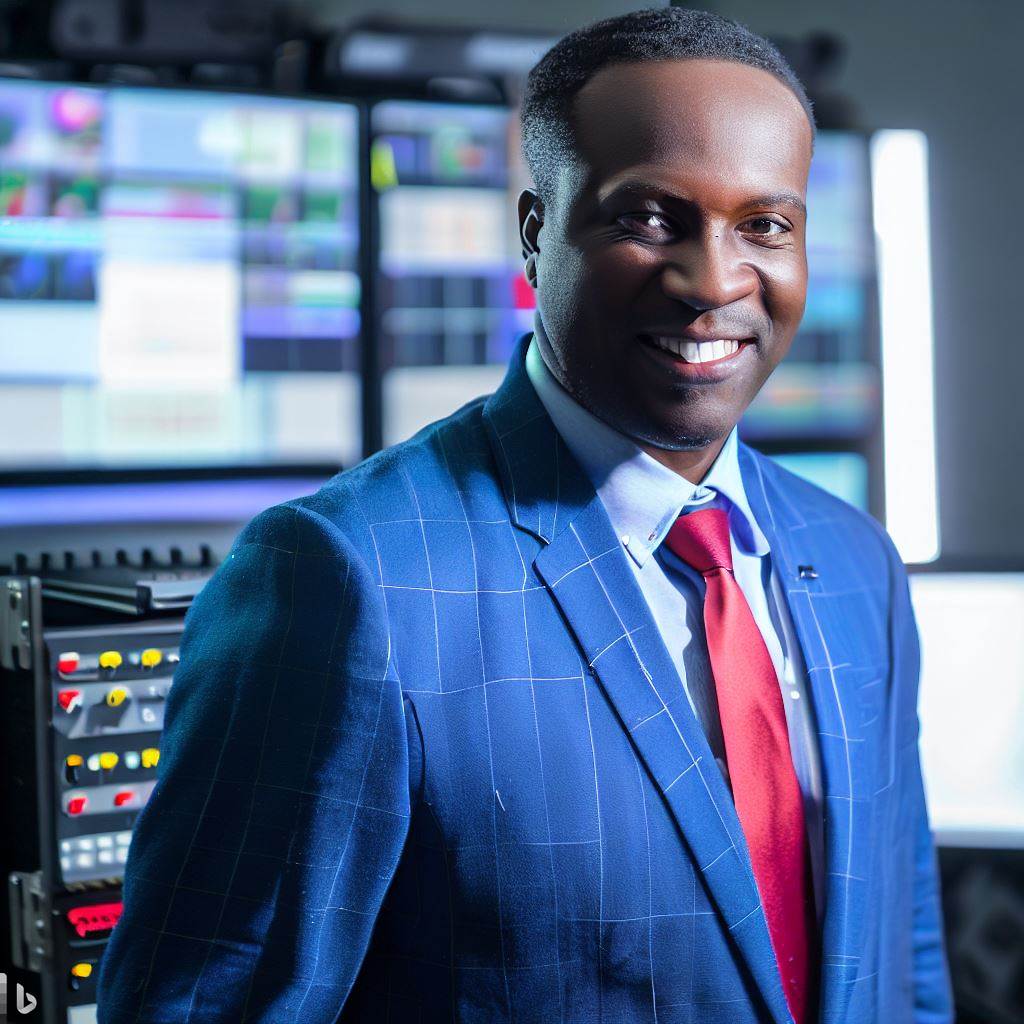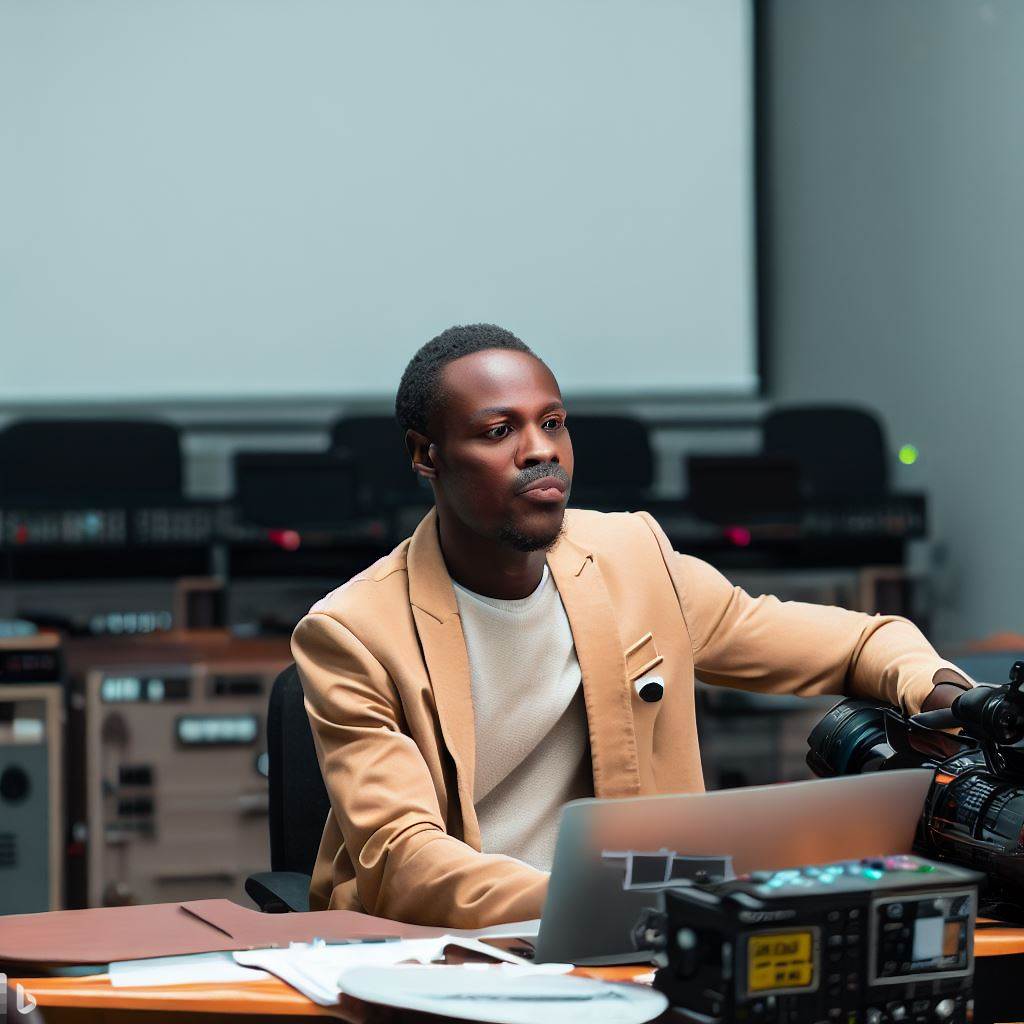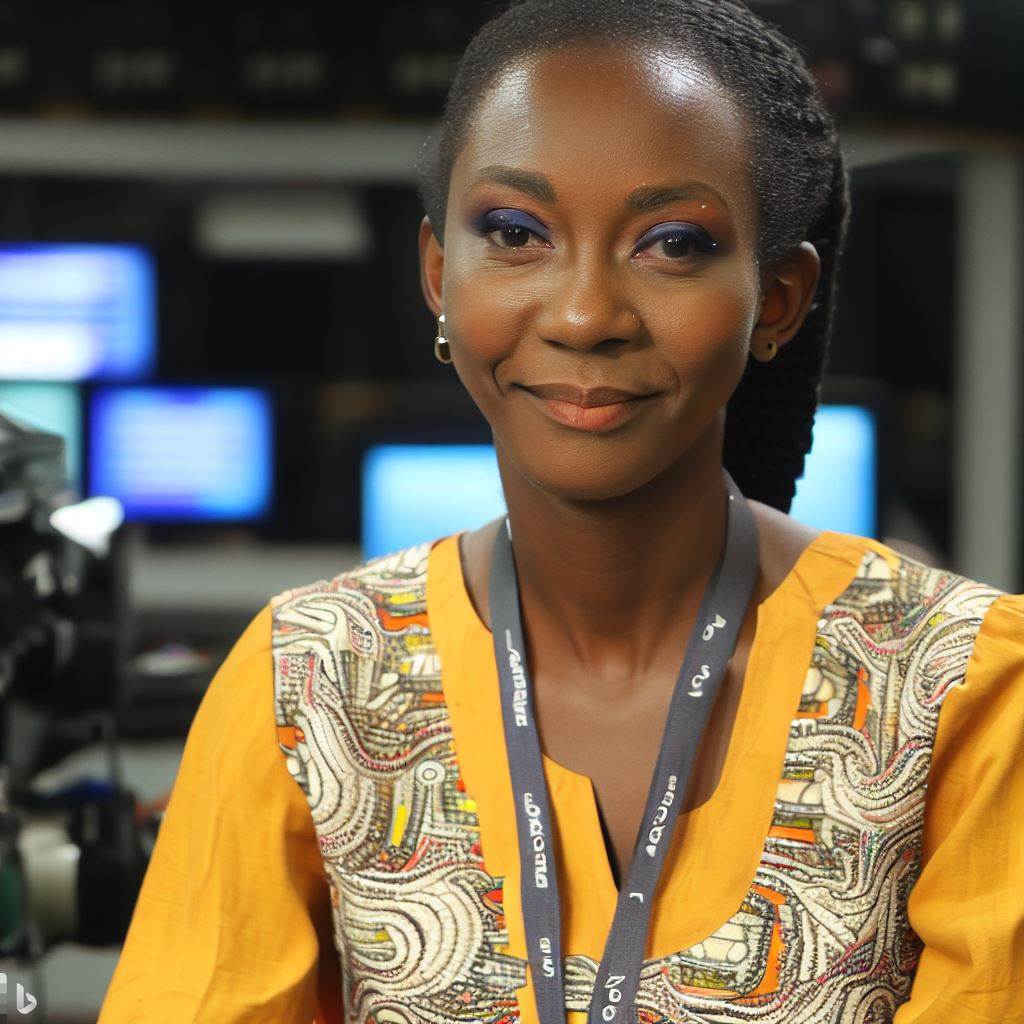Introduction
A. Brief Explanation of the Intersection Between Art and Technology
Art and technology have long been intertwined, with advancements in technology often influencing artistic expression and vice versa.
The use of technology in art has revolutionized various creative disciplines, including TV editing.
B. Background on TV Editing in Nigeria and its Relevance to the Topic
Nigeria’s television industry has witnessed significant growth in recent years, with the emergence of new channels and a surge in local content production.
TV editing plays a crucial role in shaping the final product that reaches the viewers.
C. Overview of the Blog Post’s Aim and Structure
This blog post aims to explore the intricate relationship between art and technology in the context of TV editing in Nigeria.
It will discuss the impact of technology on the creative process, the challenges faced by TV editors, and the potential future developments in the industry.
Historical Context of TV Editing in Nigeria
A. Brief history of Nigerian television industry
- Television broadcasting in Nigeria started in 1959 with the establishment of the Western Nigeria Television.
- The Nigerian television industry underwent significant growth after the country’s independence in 1960.
- The Nigerian Broadcasting Corporation (NBC) was established in 1962 to regulate television broadcasting in the country.
- The proliferation of television stations led to the creation of the Nigerian Television Authority (NTA) in 1977.
- NTA became the largest television network in Africa, broadcasting a wide range of programs to Nigerians.
B. Introduction of TV editing and its evolution over time
- TV editing was introduced to Nigeria in the early days of television broadcasting.
- Initially, editing was a manual and time-consuming process, done by physically cutting and splicing film reels.
- With advancements in technology, video editing became more efficient and accessible.
- The introduction of analog videotape in the 1970s revolutionized TV editing, making it easier and faster.
- In the 1990s, digital non-linear editing systems (NLEs) replaced analog editing, allowing for more precise and versatile editing.
C. Key technological advancements that influenced TV editing in Nigeria
- The introduction of Betacam video format in the 1980s improved the quality of TV broadcasts in Nigeria.
- Digital video recording and editing systems, like Digital Betacam and DV tapes, further enhanced the editing process.
- Computer-based editing software, such as Avid Media Composer and Final Cut Pro, transformed TV editing in Nigeria.
- The availability of high-speed internet and online video platforms opened up new possibilities for editing and distribution.
- The advent of high-definition (HD) and ultra-high-definition (UHD) formats raised the bar for TV editing quality in Nigeria.
Overall, the historical context of TV editing in Nigeria showcases the growth of the television industry and the advancements in technology that have shaped the editing process.
From the early manual film editing to the digital revolution, Nigeria has embraced new technologies to enhance the quality and efficiency of TV editing.
With each technological advancement, TV editors in Nigeria have been able to push creative boundaries and deliver engaging content to viewers across the country.
Read: Building Networks: An Essential for TV Reporters in Nigeria
Impact of Artistic Elements on TV Editing in Nigeria
A. Role of Editing in Enhancing Storytelling and Visual Aesthetics
- Editing in Nigerian TV is not just a technical task; it’s an art form.
- Through precise cuts and sequencing, editors transform raw footage into captivating narratives.
- They craft emotional arcs, ensuring viewers are immersed in the story’s essence.
- Artistic editing elevates character development and plot progression.
- This skill is pivotal in maintaining a show’s visual consistency and thematic coherence.
B. Exploration of Different Artistic Techniques Used in TV Editing
1. Montage Editing
- Montages condense time, infusing energy and emotion.
- Quick, rhythmic cuts create visual poetry in motion.
- Popular in Nollywood, montages propel stories forward with flair.
2. Jump Cuts and Match Cuts
- Jump cuts shock viewers, drawing attention to critical moments.
- Match cuts seamlessly connect disparate scenes, enhancing continuity.
3. Color Grading and Post-Production Effects
- Color grading sets the tone, from warm nostalgia to cool detachment.
- Post-production effects add magic, amplifying storytelling impact.
C. Examples of TV Shows and Films in Nigeria That Showcase Artistry in Editing
- “Tinsel” employs montages to convey complex character relationships.
- “Living in Bondage: Breaking Free” utilizes jump cuts for dramatic effect.
- “The Milkmaid” excels in color grading, evoking emotional landscapes.
In Nigeria, the intersection of art and tech in TV editing sparks creativity, pushing boundaries, and delighting audiences.
Editors here aren’t just technicians; they’re artists, weaving compelling narratives through their craft.
Montage editing, jump cuts, match cuts, color grading, and post-production effects are their tools.
These elements fuse seamlessly to enhance storytelling and create breathtaking visual aesthetics.
In TV shows and films like “Tinsel,” “Living in Bondage: Breaking Free,” and “The Milkmaid,” we witness this artistry come to life, making Nigerian television an ever-evolving canvas of creative brilliance.
Read: Educational Background of Top TV Editors in Nigeria
Technological Innovations in TV Editing in Nigeria
A. Introduction of digital editing software and equipment
With the advancement of technology, Nigeria’s TV editing industry has witnessed a significant shift from traditional analog editing to digital editing.
The introduction of digital editing software and equipment has revolutionized the way television shows are edited and produced in the country.
Editors now have access to a wide range of powerful tools and features that enable them to create professional and high-quality visuals, sound effects, and special effects.
This transition to digital editing has allowed TV editors in Nigeria to work more efficiently, resulting in faster turnaround times and improved productivity.
B. Benefits and challenges of transitioning from analog to digital editing
Transitioning from analog to digital editing has brought several benefits to the TV editing industry in Nigeria.
Firstly, digital editing offers greater flexibility and control over the editing process.
Editors can easily manipulate and modify footage, apply various effects, and make precise adjustments to achieve the desired outcome.
Secondly, it has significantly reduced the cost of editing. With digital editing, there is no need for expensive tapes and film stock, thereby reducing production costs for television shows.
However, this transition has also posed certain challenges for TV editors in Nigeria. One major challenge is the need for training and learning the new digital editing software and equipment.
Many editors who were accustomed to analog editing had to acquire new skills and adapt to the digital workflow.
Additionally, the initial investment in digital editing software and equipment can be financially burdensome for smaller production houses and independent editors.
C. Influence of technological advancements on the overall quality of TV editing
Technological advancements have had a tremendous impact on the overall quality of TV editing in Nigeria.
With the introduction of digital editing, TV shows have become visually stunning, with improved clarity, color grading, and visual effects.
The use of advanced editing software has made it possible to seamlessly integrate multiple camera angles, create smooth transitions, and enhance the overall visual storytelling.
Additionally, digital editing has allowed for greater precision in editing, resulting in a polished final product with minimal errors or imperfections.
Furthermore, technological advancements have opened up new possibilities for creativity and experimentation in TV editing in Nigeria.
Editors now have access to a vast array of innovative tools and techniques that allow them to push the boundaries of traditional editing and explore new artistic avenues.
Essentially, the introduction of digital editing software and equipment has revolutionized TV editing in Nigeria.
Despite the challenges associated with transitioning from analog to digital editing, the benefits of increased flexibility, cost-efficiency, and improved overall quality have made it a worthwhile endeavor.
Technological advancements continue to shape and elevate the art of TV editing, fostering innovation and pushing the boundaries of creative storytelling in Nigeria’s television industry.
Read: Coping with Job Pressure as a TV Reporter in Nigeria

Collaboration between Artists and Technicians in TV Production
A. Importance of teamwork between editors and directors/creators
Collaboration between artists and technicians is crucial in TV production, especially in the field of TV editing.
The collaboration between editors and directors/creators can significantly impact the final outcome of a television show.
Editors play a vital role in shaping the visual narrative and overall storytelling of a TV show.
They work closely with directors/creators to ensure that the desired artistic vision is achieved through the editing process.
This collaborative effort enhances the quality and impact of the final product.
Teamwork between editors and directors/creators allows for a seamless flow of ideas and perspectives.
Editors bring technical expertise and knowledge of visual storytelling techniques, while directors/creators provide artistic direction and creative input.
The combined efforts of both parties result in a harmonious blend of artistry and technical precision.
B. Creative decision-making and communication process
In the collaborative process between editors and directors/creators, creative decision-making plays a vital role.
Both parties must effectively communicate their artistic visions and ideas.
This exchange of ideas is crucial for the successful realization of the intended storytelling and aesthetic goals of a TV show.
Editors and directors/creators must engage in open and constructive discussions to make creative decisions that enhance the narrative and overall viewing experience.
Through this process, they can explore different editing techniques, visual effects, pacing, and storytelling approaches to determine the most effective choices for the show.
Effective communication is key to the collaboration.
Editors need to understand the director’s/creator’s vision and objectives in order to bring them to life through the editing process.
Regular meetings and discussions help align their creative visions, resulting in a more cohesive and impactful TV show.
C. Successful examples of collaborations in TV editing in Nigeria
In the Nigerian TV industry, there have been successful collaborations between editors and directors/creators that have yielded outstanding results.
These collaborations have contributed to the growth and recognition of Nigerian TV shows both nationally and internationally.
One example of a successful collaboration is the TV show “The Men’s Club.”
The editors work closely with the director and creator, and their collaboration has resulted in a visually stunning and engaging series that has garnered a large following.
Another example is the TV show “Skinny Girl in Transit.”
The collaboration between the editor and director/creator has led to a seamless narrative flow, effectively combining humor, drama, and important social issues.
This collaboration has been instrumental in the show’s popularity among audiences.
Generally, collaboration between artists and technicians, especially between editors and directors/creators, is crucial in TV production.
The teamwork, creative decision-making, and effective communication process contribute to the success and quality of a TV show.
Nigeria has seen successful examples of such collaborations, which have elevated the standard of TV editing in the country.
Read: Understanding the Nigerian Union of TV Reporters
Challenges and Opportunities in the Intersection of Art and Tech
A. Unique challenges faced by TV editors in Nigeria
- Limited access to high-quality equipment and software restricts the creative possibilities for TV editors.
- Power outages and unreliable internet connectivity add further obstacles to the editing process.
- TV editors in Nigeria often face tight deadlines and high production demands, leading to increased pressure.
- Limited funding and resources make it difficult for TV editors to experiment with new editing techniques or styles.
- Lack of formal training programs and mentorship opportunities hinder skill development for aspiring TV editors.
- The industry’s focus on quantity over quality sometimes compromises the artistic vision of TV editors.
B. Opportunities for innovation and career growth in art and technology
- The rapid advancement of technology provides endless possibilities for TV editors to experiment and push creative boundaries.
- Growing demand for high-quality content in Nigeria’s TV industry opens up opportunities for skilled editors.
- The rise of online streaming platforms creates new avenues for TV editors to showcase their talents.
- Collaboration with other creative professionals, such as cinematographers and sound designers, enhances the editing process.
- TV editors can leverage social media platforms to gain exposure and attract potential clients or job opportunities.
- Continued learning and self-improvement through online tutorials and workshops can lead to career advancement.
C. Potential for cross-disciplinary projects and collaborations in the future
- The intersection of art and technology offers opportunities for TV editors to collaborate with artists from various fields, such as animation or virtual reality.
- Cross-disciplinary projects can result in innovative and immersive storytelling experiences for audiences.
- Collaborations with tech companies and startups can lead to the development of specialized editing tools and software.
- TV editors can work alongside programmers and engineers to create interactive and personalized viewing experiences.
- The combination of art and tech can address social issues and drive cultural change through powerful visual narratives.
In essence, while TV editors in Nigeria face unique challenges such as limited resources and tight deadlines, there are also significant opportunities for growth and innovation in the intersection of art and technology.
The advancement of technology, increasing demand for high-quality content, and potential cross-disciplinary collaborations open up exciting prospects for TV editors in Nigeria to elevate their craft and make a lasting impact on the industry.
Conclusion
A. Recap of the intersection between art and tech in TV editing in Nigeria
In this post, we have explored the intersection between art and technology in the field of TV editing in Nigeria.
We have seen how the advancement of technology has revolutionized the way TV shows are edited, allowing for more creative and visually appealing content.
We discussed how TV editors in Nigeria use various software and tools to enhance their editing skills, creating a synergy between artistry and technological expertise.
This intersection has led to the production of high-quality TV shows that captivate audiences and reflect the cultural richness of Nigeria.
B. Final thoughts on the significance and potential of this intersection
The intersection between art and technology in TV editing has immense significance and potential.
It not only enables TV editors to push the boundaries of creativity but also empowers them to showcase Nigeria’s vibrant artistry on a global scale.
By leveraging technology, TV editors can experiment with different editing techniques, visual effects, and storytelling methods, creating immersive and engaging narratives.
This intersection opens up a world of possibilities for TV editing in Nigeria, allowing for continuous growth and innovation.
C. Closing remarks and encouragement for readers to explore this topic further
In a nutshell, the intersection of art and technology in TV editing in Nigeria is a fascinating subject that deserves further exploration.
As the industry continues to evolve, it is crucial for TV editors and enthusiasts to stay updated with the latest technological advancements and artistic trends.
By delving deeper into this topic, readers can gain a deeper understanding of the dynamic relationship between art and tech in TV editing and contribute to the growth of the industry.
So, go ahead and continue exploring this intersection to unlock new possibilities and inspire your creative journey in TV editing.




